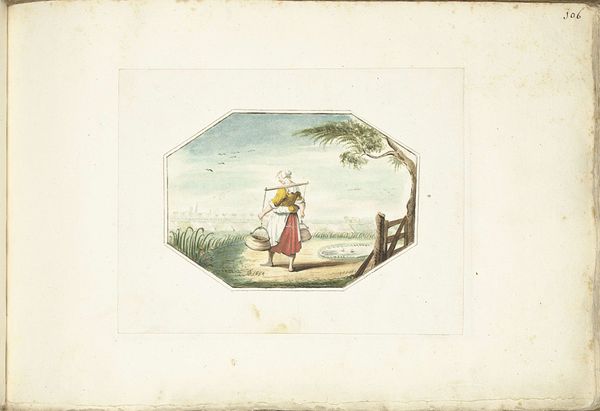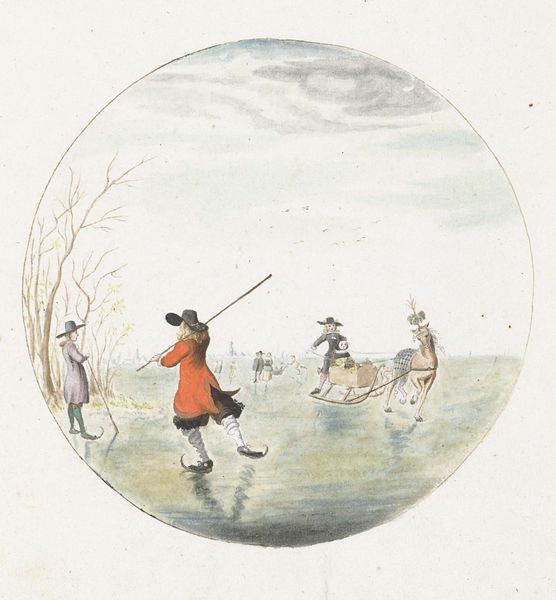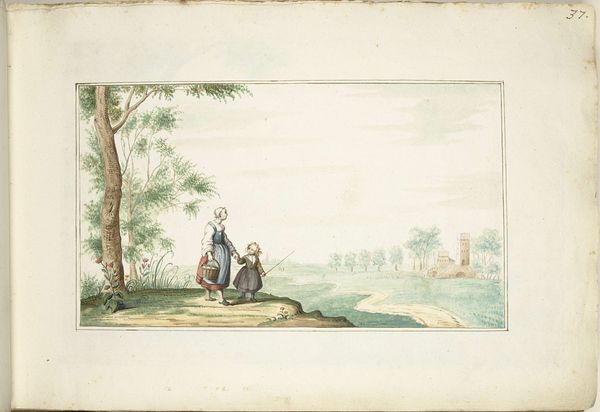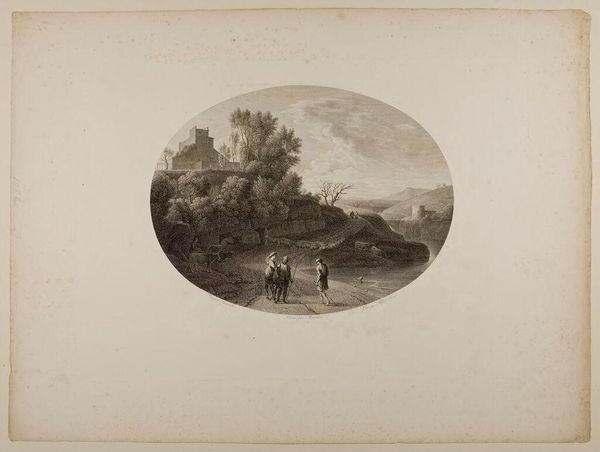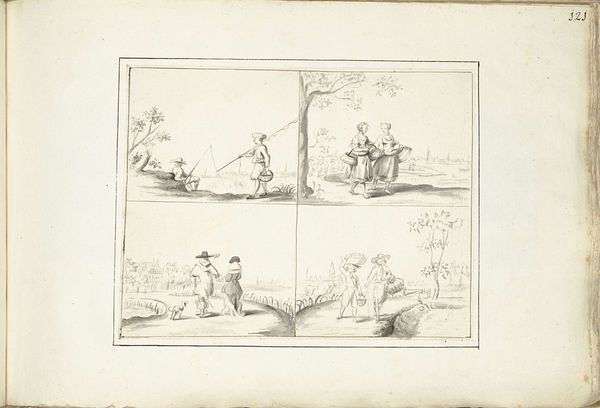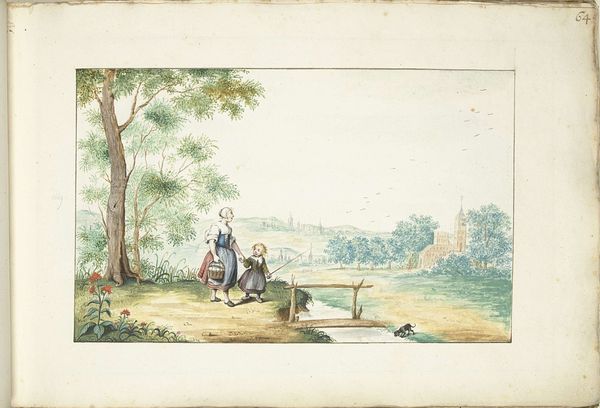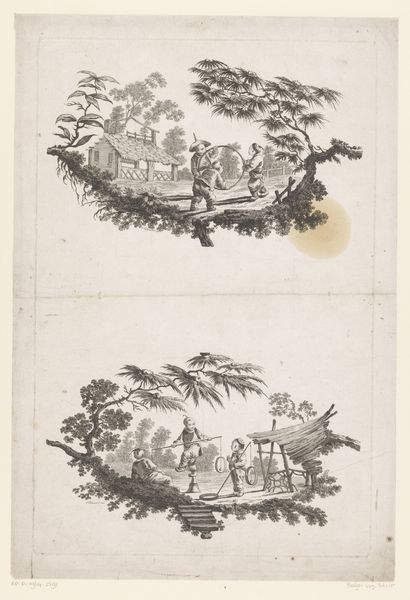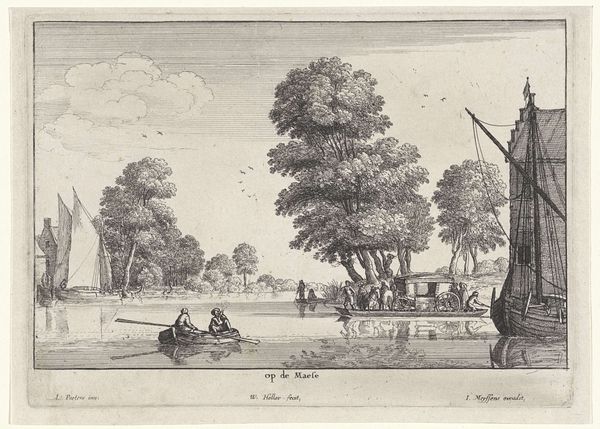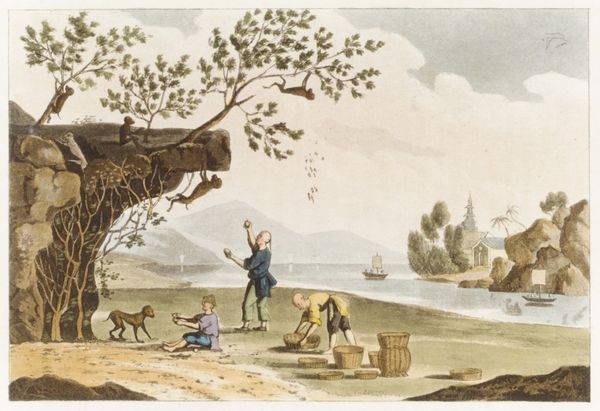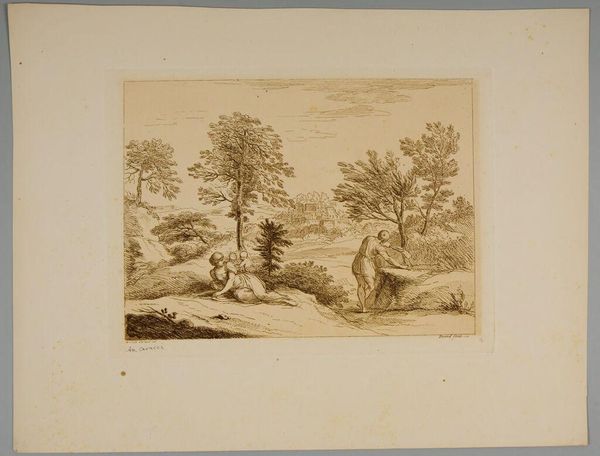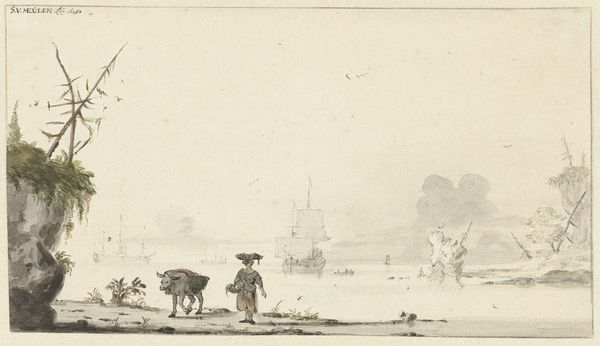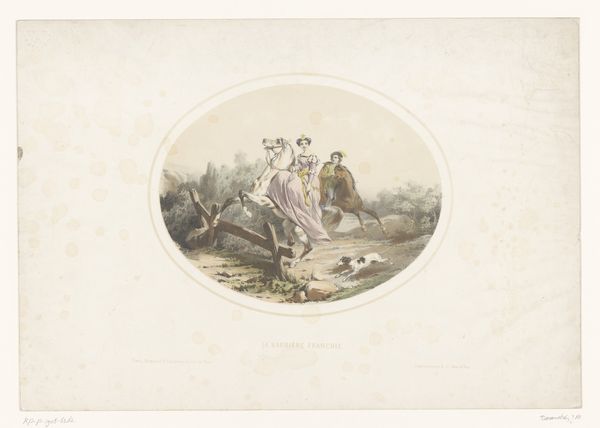
Dimensions: height 243 mm, width 360 mm
Copyright: Rijks Museum: Open Domain
Curator: This watercolor piece, “Winter en Zomer” by Gesina ter Borch, circa 1655, showcases two contrasting scenes in a unique, almost mirrored fashion. Editor: Yes, the circular frames of winter and summer are definitely eye-catching, almost like looking through portholes into different worlds. What strikes me most is the way Ter Borch used such simple materials, paper and watercolors, to create these little slices of life. What do you make of that choice? Curator: I think the use of humble materials like watercolor on paper is critical. It speaks to the availability of artistic production and, possibly, consumption during the Dutch Golden Age. Was this for personal enjoyment, or was it made with future exchange or sale in mind? Considering its scale and delicacy, we might even speculate about the gendered connotations surrounding artistic practice. Perhaps Ter Borch found creative liberty precisely in materials considered less prestigious than oil paint on canvas. Did that give her more latitude? Editor: That’s a really interesting point. So you’re saying the choice of watercolor might not just be about aesthetics, but also about the context of her position as a female artist at that time, how that access—or lack thereof—to specific materials might've shaped her practice? Curator: Precisely. The ease of watercolor allowed for intimate and perhaps more readily produced artworks. It removes, perhaps, the barrier or labor involved in oil production during this period. We must remember that during this period in Dutch History, women played vital roles in the sphere of commercial trade. Art very often would reflect daily activities or celebrations, indicating the emergence of landscape in art, alongside scenes of everyday life. What do you take away from these specific settings and scenes depicted, Winter on ice and summer by wagon? Editor: So much to think about. It really underscores how materials can tell a much deeper story about labor, access, and even social standing, changing our view of something as simple as a watercolor drawing. Curator: Yes, indeed. And by exploring these aspects, we see the art and culture shift into something much more insightful and, really, relevant today!
Comments
No comments
Be the first to comment and join the conversation on the ultimate creative platform.
